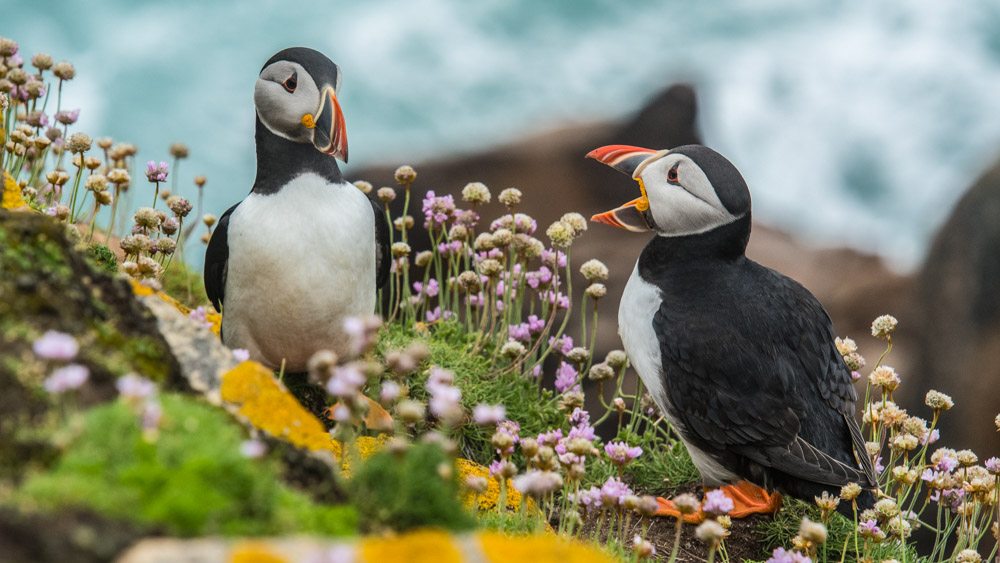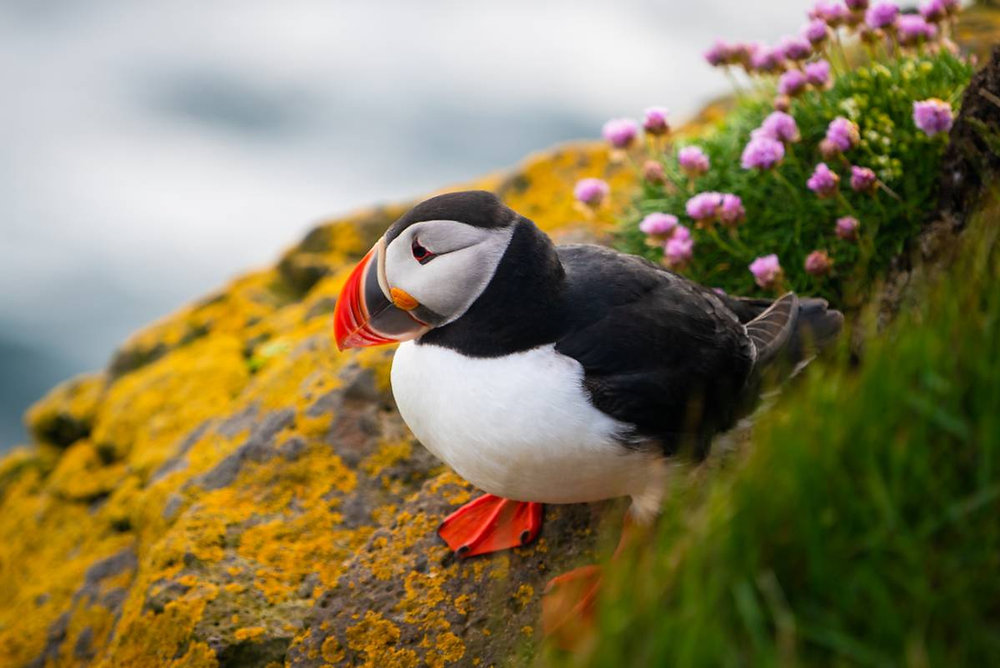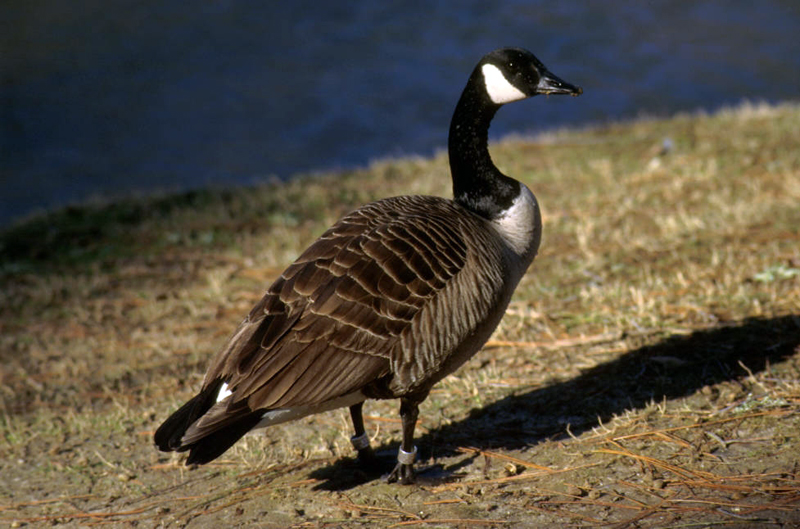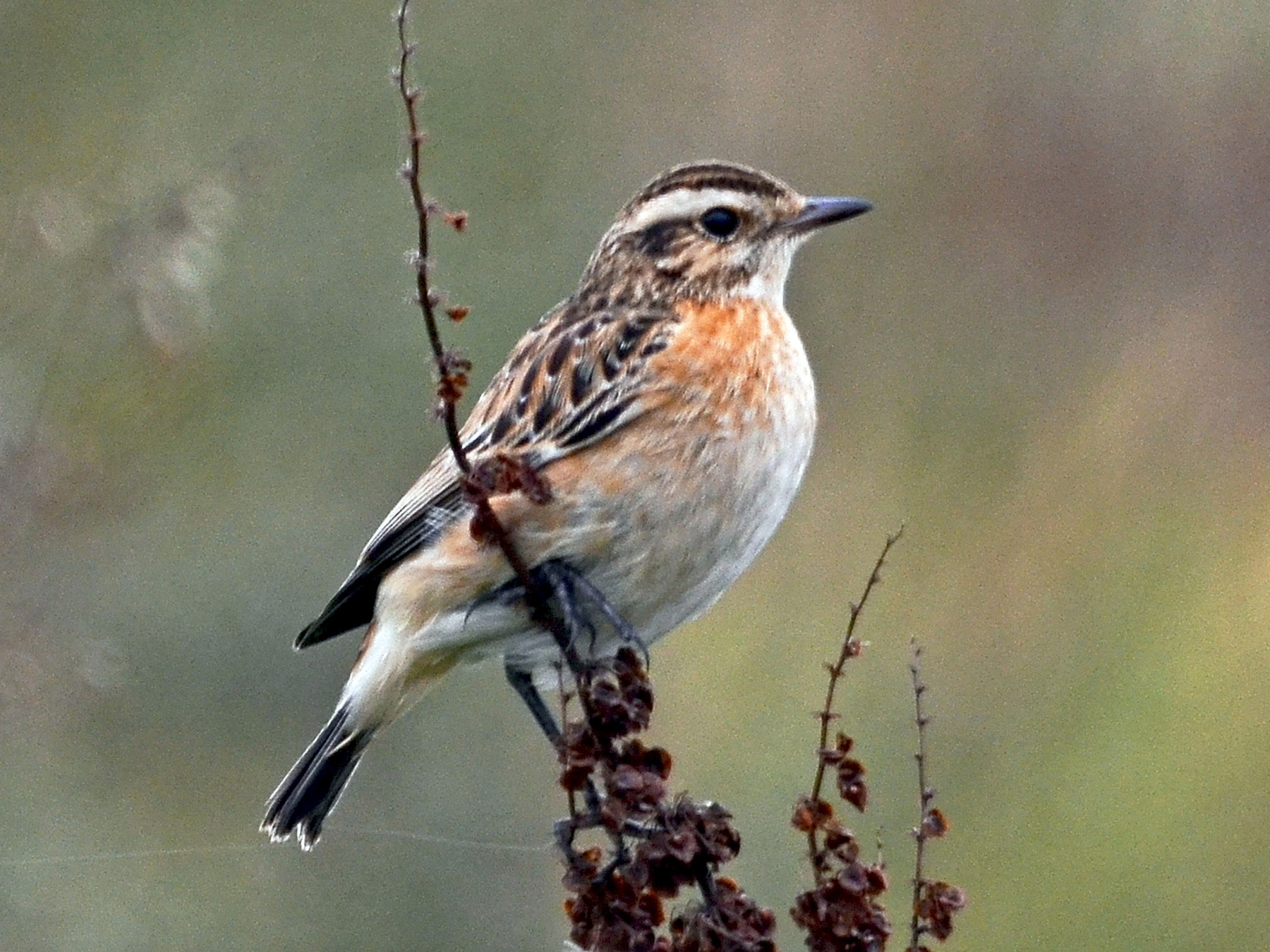Bird migration is a fascinating phenomenon that has intrigued humans for centuries. Every year, millions of birds travel thousands of miles between their breeding and wintering grounds, often following the same routes year after year.
Migration is a way for birds to find food, suitable breeding grounds, and escape harsh weather conditions. There are many types of migrating birds, and they can migrate in different ways.
You are reading: 10 Types Of Migrating Birds
Some birds migrate long distances, while others only travel short distances. Some birds migrate daily, while others migrate seasonally or irregularly. In this article, we will explore 10 types of migrating birds and learn more about their migration patterns, routes, and reasons for migration.

10 Types Of Migrating Birds
American golden plovers
The American golden plover is a medium-sized plover that belongs to the Pluvialis genus. The species name “dominica” refers to Santo Domingo, and the genus name is Latin and means relating to rain, from pluvia, “rain”.
The breeding adult American golden plover has a black face, neck, breast, and belly, with a white crown and nape that extends to the side of the breast. The back is mottled black and white with pale, gold spots.
The breeding female is similar, but with less black. When in winter plumage, both sexes have grey-brown upperparts, pale grey-brown underparts, and a whitish eyebrow. The head is small, along with the bill.
The American golden plover is smaller, slimmer, and relatively longer-legged than the European golden plover, which also has white axillary (armpit) feathers. It is more similar to the Pacific golden plover with which it was once considered conspecific under the name “lesser golden plover”.
The American golden plover has a long migration route. In the fall, many fly offshore from the East Coast and don’t land until they reach South America. In the spring, they pass primarily through the middle of North America to reach their Arctic breeding grounds.
The American golden plover follows an elliptical migration path, and northbound birds pass through Central America about January–April and stage in great numbers in places like Illinois before their final push north.
Arctic terns
Arctic terns are medium-sized birds that belong to the family Laridae. They have a circumpolar breeding distribution covering the Arctic and sub-Arctic regions of Europe, Asia, and North America. Here are some interesting facts about Arctic terns based on the search results:
– Arctic terns are slender terns with long, angular wings and pointed wingtips. They have a small round head with a steep forehead and extremely short legs. Breeding adults have a deeply forked tail.
– Arctic terns are mainly grey and white plumaged, with a red/orange beak and feet, white forehead, a black nape and crown (streaked white), and white cheeks. The grey mantle is 305 mm (12.0 in), and the scapulae are fringed brown, some tipped white. The upper wing is grey with a white leading edge, and the collar is completely white, as is the rump. The deeply forked tail is whitish, with grey outer webs.
– Arctic terns are long-lived birds, with many reaching fifteen to thirty years of age. They eat mainly fish and small marine invertebrates. The species is abundant, with an estimated two million individuals.
– Arctic terns are well known for their long yearly migration. They travel from their Arctic breeding grounds to Antarctica where they enjoy the Antarctic summer, covering around 25,000 miles. Migration is the best time to go looking for an Arctic Tern, unless you have plans to visit their arctic breeding grounds or their Antarctic wintering grounds. They start leaving the wintering grounds in March, so you can expect to see them in coastal North America starting in late April with greater numbers passing through in May. They tend stay out to sea during migration, so consider joining a pelagic birding trip or whale watching trip as they can be challenging to spot from shore.
– Arctic terns can also be seen along the eastern coast of South America, Western Europe, Iceland, Australia, New Zealand, and on Pacific islands. Their winter habitat extends to the northernmost points of Antarctica.
Arctic terns are fascinating birds that undertake one of the longest migrations of any bird species. Their unique physical characteristics and behaviors make them a popular subject for birdwatchers and researchers alike.
Puffins

Puffins are fascinating birds that belong to the Fratercula genus, which includes three species of small alcids. These pelagic seabirds feed primarily by diving in the water and breed in large colonies on coastal cliffs or offshore islands, nesting in crevices among rocks or in burrows in the soil.
Here are some interesting facts about puffins based on the search results:
Physical Characteristics:
– All puffin species have predominantly black or black and white plumage, a stocky build, and large beaks that get brightly colored during the breeding season. They shed the colorful outer parts of their bills after the breeding season, leaving a smaller and duller beak.
– Puffins have short wings that are adapted for swimming with a flying technique underwater. In the air, they beat their wings rapidly (up to 400 times per minute) in swift flight, often flying low over the ocean’s surface.
– Atlantic puffins are usually 10 inches tall (18 cm), which is about the height of a quart jug of milk. The puffin weighs about 500 grams, similar to a can of soda.
Breeding and Nesting:
– Puffins breed in burrows on islands in the North Atlantic and sub-Arctic regions of Europe, Asia, and North America. Iceland is the breeding home of perhaps 60 percent of the world’s Atlantic puffins.
– Puffins are colonial nesters, excavating burrows on grassy clifftops or reusing existing holes, and on occasion may nest in crevices and among rocks and scree, in competition with other birds and animals for burrows. They can excavate their own hole or move into a pre-existing system dug by a rabbit, and have been known to peck and drive off the original occupant.
– Females lay a single egg, and both parents take turns incubating it. Puffin chicks are known as “pufflings” .
Behavior:
– Puffins are excellent swimmers that use their wings to stroke underwater with a flying motion. They steer with rudder-like webbed feet and can dive to depths of 200 feet, though they usually stay underwater for only 20 or 30 seconds. Puffins typically hunt small fish like herring or sand eels.
– In the air, puffins are surprisingly fleet flyers. By flapping their wings up to 400 times per minute, they can reach speeds of 55 miles an hour.
– Puffins help people by acting as indicators of ocean health.
Conservation:
– Puffins are not endangered but are threatened by human activities and are rare in many areas where they were once abundant. As a result, it is important to protect critical puffin breeding and feeding habitat. In some parts of their range, there are just a few colonies. Where this occurs “all the eggs are in a few baskets” and these populations are vulnerable to catastrophes such as oil spills, avian diseases, and introduction of predators.
– SOS Puffin is a conservation project at the Scottish Seabird Centre at North Berwick to save the puffins on islands in the Firth of Forth. Puffin numbers on the island of Craigleith, once one of the largest colonies in Scotland with 28,000 pairs, have declined dramatically to just a few thousand due to the invasion of a large introduced plant, the tree mallow (Lavatera arborea) .
– Project Puffin is an effort initiated in 1973 by Stephen W. Kress of the National Audubon Society to restore Atlantic puffins to nesting islands in the Gulf of Maine. Eastern Egg Rock Island in Muscongus Bay, about 10 km (6 mi) from Pemaquid Point, had been occupied by nesting puffins until 1885, when the birds disappeared because of overhunting.
Canada geese

Canada geese are large waterbirds that belong to the Branta canadensis species. Here are some interesting facts about Canada geese based on the search results:
Physical Characteristics:
– Canada geese have a long black neck and head with a white band on their cheeks that runs under their chin like a strap. They have black feet and a light tan body with lighter brown or white under their tail. Their black bill has lamellae, or teeth, around the outside edges that are used as a cutting tool. Males and females look alike, although females are usually a little smaller than males.
– Canada geese are big waterbirds with a long neck, large body, large webbed feet, and wide, flat bill. They are larger than a mallard but smaller than a mute swan.
Breeding and Nesting:
– Canada geese breed and winter in most of Canada and the United States. They mate for life with very low “divorce rates,” and pairs remain together throughout the year. Geese mate “assortatively,” larger birds choosing larger mates and smaller ones choosing smaller mates.
– Canada geese nest in the same region their parents did, and often in the same nest every year. Females lay an average of five eggs, and both parents take turns incubating them. The eggs hatch in about 25-30 days, and the goslings are able to swim and feed themselves within a day of hatching.
Behavior:
– Canada geese are known for their V-shaped flocks that accent spring and fall skies. They migrate in large V-shaped formations and honk loudly while they are flying. They migrate at a slow pace and can reach speeds of more than 100 kilometers per hour when the wind is right.
– Canada geese are adaptable and can be tolerant of people. They readily take to urban parks and can be a nuisance in some areas. They feed by dabbling in the water or grazing on land, where they mostly feed on a wide variety of plant material, including grass stems and shoots, sedges, and seeds and berries. During migration, Canada geese are often found in agricultural fields, where they feast on a whole host of cultivated grains.
Conservation:
– Canada geese are ubiquitous, and their population has increased dramatically by over 7% per year between 1966 and 2019, according to the North American Breeding Bird Survey. Partners in Flight estimates the global breeding population at 7.1 million and rates them 5 out of 20 on the Continental Concern Score, indicating a species of low conservation concern.
Bald eagles
Bald eagles are majestic birds of prey found in North America. Here are some interesting facts about bald eagles based on the search results:
Physical Characteristics:
– Bald eagles are not actually bald; they have a white head and tail with a dark brown body and wings. They have a large, hooked yellow beak and yellow feet. Immature birds have mostly dark heads and tails with mottled brown bodies and wings.
– Bald eagles are one of the largest birds in North America, with a wingspan of up to 8.5 feet (2.6 meters) and a weight of up to 14 pounds (6.5 kilograms). Females are generally larger than males.
Breeding and Nesting:
– Bald eagles mate for life and build large nests, called aeries, at the top of tall trees near large bodies of water. Females lay one to three eggs, and both parents take turns incubating them. The eggs hatch in about 35 days, and the young eaglets fledge at around 10 to 12 weeks of age.
Behavior:
– Bald eagles are well adapted to their lifestyle as predators. They have sharp, pointed beaks designed for ripping and tearing prey into bite-sized pieces, and powerful legs and feet equipped with large talons used for killing their prey. They feed mainly on fish, but also eat small mammals and birds.
– Bald eagles are known for their soaring flight, which they use to search for prey and to travel long distances. They can fly up to 10,000 feet (3,048 meters) high and see fish up to a mile (1.6 kilometers) away. They can reach speeds of up to 100 miles (161 kilometers) an hour when attacking prey.
Conservation:
– Bald eagles were once on the brink of extinction due to hunting and pollution, but laws created almost 40 years ago have helped protect them, and they have made a comeback. They are no longer considered endangered and are now listed as a species of “least concern” by the International Union for Conservation of Nature (IUCN).
– Bald eagles are the national bird and emblem of the United States of America and appear on its seal. They are also a spiritual symbol for native people.
Swallows and martins
Swallows and martins are small, elegant, aerial birds that belong to the Hirundinidae family. Here are some interesting facts about swallows and martins based on the search results:
Physical Characteristics:
– Swallows and martins have a distinctive appearance, with long, tapered wings, forked tails (swallows have elongated outer feathers), and small bills. They are mostly small, elegant, aerial species.
– Swallows and martins are mostly brown and grey, with glossy blue-black above and white underside and rump. House martins have a blue/black back, head, and wings, with a small forked tail.
Breeding and Nesting:
– Swallows and martins are summer migrants, flying in from Africa to raise their young and feast on insects snatched from the sky. They build cup-shaped nests out of mud and grass, often under the eaves of buildings or on cliffs.
Behavior:
– Swallows and martins are highly adapted to aerial feeding and are known for their acrobatic flight. They feed on insects caught in flight, and their long, pointed wings and forked tails make them highly maneuverable in the air.
– Swallows and martins are tolerated by humans because of their beneficial role as insect eaters, and some species have readily adapted to nesting in and around human habitation. The barn swallow and house martin now rarely use natural sites. The purple martin is also actively encouraged by people to nest around humans, and elaborate nest boxes are erected.
Conservation:
– Swallows and martins are not considered endangered, but some species are declining due to habitat loss and other factors. It is important to protect critical swallow and martin breeding and feeding habitat.
Warblers
Warblers are a group of small, colorful songbirds that belong to the Parulidae family. They are known for their beautiful plumage and melodious songs. Here are some interesting facts about warblers based on the search results:
Migration:
– Warblers are migratory birds that breed in North America during the summer and spend the winter in Central and South America. They migrate at night, and although scientists do not know exactly how their migration route is determined, there are a few hypotheses.
– Warblers migrate at different times depending on the species. For example, Yellow Warblers migrate earlier than most other warblers in both spring and fall. Black-throated Blue Warblers now start spring migration 5.5 days sooner than they did in the 1960s.
Breeding and Nesting:
– Warblers breed in North America during the summer and build their nests in trees or shrubs. They lay small, speckled eggs and both parents take turns incubating them. The young hatch after about two weeks and are fed by their parents until they are ready to leave the nest.
Behavior:
– Warblers are insectivores and feed on insects and spiders. They are known for their acrobatic foraging behavior, hopping from branch to branch and gleaning insects from leaves and twigs. They are also known for their beautiful songs, which are used to attract mates and defend territories.
– Warblers can be challenging to identify because of their small size and similar plumage. However, there are many resources available to help birders identify warblers, including field guides, apps, and online resources.
Conservation:
– Warblers are not considered endangered, but some species are declining due to habitat loss and other factors. It is important to protect critical warbler breeding and feeding habitat.
Flycatchers
Flycatchers are a group of small to medium-sized birds that belong to the family Tyrannidae. Here are some interesting facts about flycatchers and their migration patterns based on the search results:
Migration:
– Flycatchers are migratory birds that breed in North America during the summer and spend the winter in Central and South America. They typically leave their northern breeding grounds in September and begin to return to the southern United States in mid-March.
– During both spring and fall migration between the south-central United States and Central America, Scissor-tailed Flycatchers tend to wander widely and can show up in unexpected places.
– Migration timing can be used to help identify confusing flycatcher species. For example, Eastern Phoebes migrate earlier than Great Crested Flycatchers and Willow Flycatchers.
– Some flycatchers, such as the Eastern Phoebe, stay in their breeding range throughout the winter, while others migrate to the tropics to keep up with their insect prey.
Behavior:
– Flycatchers are insectivores and feed on insects caught in midair. They are known for their acrobatic foraging behavior, perching on a branch and then darting out to catch insects in flight. They are also known for their distinctive calls and songs, which can be used to identify different species.
Conservation:
– Flycatchers are not considered endangered, but some species are declining due to habitat loss and other factors. It is important to protect critical flycatcher breeding and feeding habitat.
Wheatears

Northern wheatears are small migratory birds that belong to the Oenanthe oenanthe species. Here are some interesting facts about northern wheatears based on the search results:
Migration:
– Northern wheatears are long-distance migrants that breed in open stony country in Europe, Asia, and North America and spend the winter in Africa. They make one of the longest journeys of any small bird, crossing ocean, ice, and desert. They migrate from Sub-Saharan Africa in spring over a vast area of the Northern Hemisphere that includes northern and central Asia, Europe, Greenland, Alaska, and parts of Canada. In autumn, they return to Africa, where their ancestors had wintered.
– Birds from eastern Canada migrate east via Greenland and Europe to winter in Africa, while birds from Alaska and northwestern Canada cross the Bering Strait and make a long westward flight across Asia to reach their wintering grounds mostly in Africa.
Breeding and Nesting:
– Northern wheatears breed in open stony country in Europe, Asia, and North America and nest in rock crevices and rabbit burrows. They lay one to six eggs, depending on the subspecies, and both parents take turns incubating them. The eggs hatch in about 10 to 20 days, and the young birds fledge in about 10 to 20 days.
Behavior:
– Northern wheatears are insectivores and feed on insects and spiders. They are known for their acrobatic foraging behavior, hopping from rock to rock and gleaning insects from the ground. They are also known for their distinctive white rump, which is visible when they fly away.
Conservation:
– Northern wheatears are not considered endangered, but their population is declining due to habitat loss and other factors. It is important to protect critical northern wheatear breeding and feeding habitat.
Whinchats

Read more : How To Fix Twirling Bird Feeder
Whinchats are small migratory passerine birds that belong to the Saxicola rubetra species. Here are some interesting facts about whinchats based on the search results:
Physical Characteristics:
– Whinchats are short-tailed birds that move on the ground with small, rapid hops and frequently bob and flick their wings and tail. They are similar in size to their relative, the European robin, being 12 to 14 cm (4.7 to 5.5 in) long and weighing 13 to 26 g (0.46 to 0.92 oz). Both sexes have brownish upperparts mottled darker, a buff throat and breast, a pale buff to whitish belly, and a blackish tail with white bases to the outer tail feathers.
Migration:
– Whinchats are migratory birds that breed in Europe and western Asia and winter in central Africa. They make a surprisingly strenuous migration from Europe to sub-Saharan Africa. They arrive in Britain each spring to breed and, after raising their young, head to wintering grounds in central and southern Africa.
Breeding and Nesting:
– Whinchats breed in upland areas of northern and western Britain, with a few in Ireland. Fledging takes place about eighteen days after hatching, and the parents continue to feed the young for another fortnight. Moulting takes place in late summer before the migration southwards, and again on the wintering grounds in Africa before the migration northwards in spring.
Behavior:
– Whinchats are largely solitary birds, though they may form small family groups in autumn. They favor rough low vegetation habitats such as heathland, moorland, and rough grassland.
Conservation:
– Whinchats are a common species with a wide range, and the International Union for Conservation of Nature has classified them as being of “least concern”. However, their population is declining due to habitat loss and other factors. It is important to protect critical whinchat breeding and feeding habitat.
FAQS
1. What is bird migration?
Bird migration is the seasonal movement of birds from one region to another, typically for breeding or feeding purposes.
2. How many bird species are migratory?
At least 4,000 species of bird are regular migrants, which is about 40 percent of the total number of birds in the world.
3. What is the longest migration of any bird in the world?
The Arctic tern has the longest migration of any bird in the world. These black-capped, red-billed birds can fly more than 49,700 miles in a year, making a round trip between their breeding grounds in the Arctic and the Antarctic, where they spend their winters.
4. Why do migratory birds crash into buildings and how can it be prevented?
Many species of birds migrating at night are prone to hitting buildings. This can be prevented by turning off unnecessary lights at night, especially during migration season, and by using bird-safe glass in new construction.
5. How do birds know where to travel during migration?
Scientists are still trying to unlock the mystery of how birds navigate during migration. Birds migrate using a variety of techniques, including navigation by the stars, sensing changes in the earth’s magnetic field, and even smell.
6. What are some human-caused hazards for migratory birds?
Up to one billion birds die each year from window collisions in the United States alone. Additionally, approximately seven million birds die from striking TV and radio towers in North America annually.
7. How far do birds migrate?
The distance birds migrate varies depending on the species. Some birds, such as the northern cardinal and northwestern crow, don’t need to migrate because they can find food in their home ranges throughout the winter. Other birds, such as the Arctic tern, can fly more than 49,700 miles in a year.
8. What are some migration “hot spots” in the United States?
Some locations are known as migration “hot spots” where large numbers of birds can often be seen in large numbers. The National Audubon Society lists these six locations as among the best in the United States: Cape May, New Jersey; Point Pelee, Ontario; High Island, Texas; Hawk Mountain, Pennsylvania; Bosque del Apache, New Mexico; and the Klamath Basin, California.
9. How does migration benefit birds and the environment?
Migration allows birds to find better breeding and feeding grounds, which can help them survive and thrive. Additionally, birds play an important role in the environment by pollinating plants, controlling insect populations, and spreading seeds.
10. How can we help protect migratory birds?
We can help protect migratory birds by supporting conservation efforts, reducing our use of pesticides and other harmful chemicals, using bird-safe glass in new construction, and turning off unnecessary lights at night during migration season.
Source: https://petstutorial.com
Category: Birds










